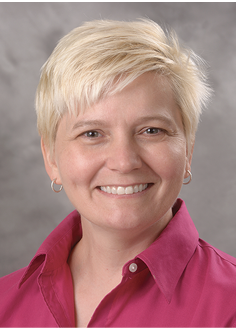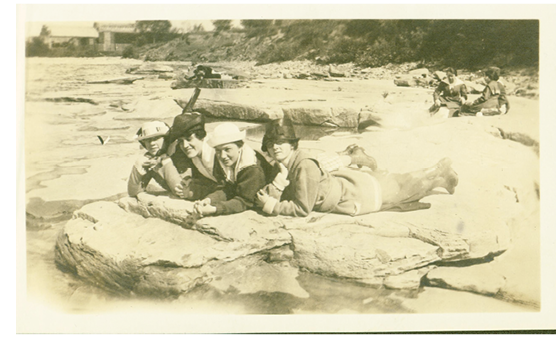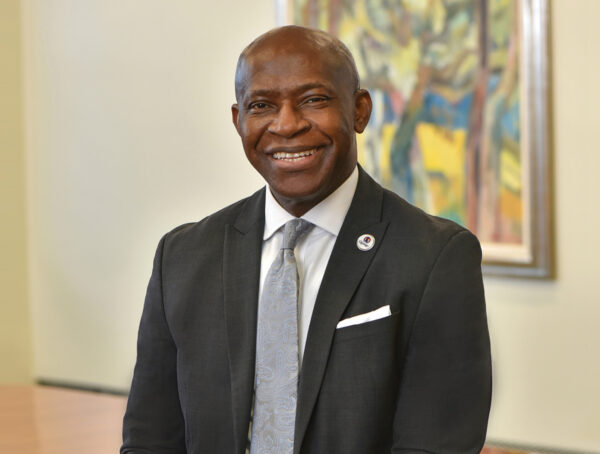Oswego researchers work to improve the health of the lake that means so much to our campus and our community
To begin to understand it, you must stand on its shore. James Pagano ’74 has, for decades—first as a child growing up in Oswego, today as a researcher.
“I have lived, pretty much, with the influence of the lake my entire life,” said Pagano, a member of the department of chemistry at SUNY Oswego. Pagano’s parents operated a grocery store in the city for more than 40 years; all five of their children worked in the store, treasuring Sundays off to picnic, swim and play on the waves of Lake Ontario.
Those who have never stood at the edge of a Great Lake often can’t fathom the vastness of our inland freshwater seas. Until they have experienced it, it is hard to imagine the many personalities that reflect the mysterious abyss of Lake Ontario: fierce and peaceful, dangerous and beautiful.
See web exclusive student photography and tips for photographing an Oswego sunset
SUNY Oswego’s main campus borders the 14th largest lake on the planet. At 7,320 square miles, the lake also looms large in the photograph albums and memories of alumni: summer’s sunsets that carve an orange path across a gently rippling surface, bands of rocks that punish the feet of swimmers, winter’s icebergs that huddle against the shore, waves crashing onto stones with roiling fury.
But beneath the surface of the water, there are more stories to tell. This complex ecosystem is the target of threats that range from chemical to climactic. It grapples with pollutants, invasive species, water quality issues, loss of biodiversity and declining fish health, to name just a few.
Pagano knows the consequences of failing to have vigilance over the waters of the Great Lakes: negative impacts on the health and prosperity of our communities. Since 2005, he has headed up the Environmental Research Center in the Department of Chemistry at SUNY Oswego.
Among its goals: work collaboratively to improve understanding of the movement of chemical contaminants in Lake Ontario and its food chain.
“Oswego has a long history of conducting research on Lake Ontario with many partners in the area,” Pagano said. In fact, the ERC was established on campus in the 1960s; first as LOTEL (Lake Ontario Environmental Laboratory) and later changed to SURCO in 1978 (State University Research Center at Oswego) and finally changed to the ERC in 1995.
SUNY Oswego’s proximity to Lake Ontario and the Oswego River—in combination with state-of-the-art science laboratories in the Richard S. Shineman Center for Science, Engineering and Innovation—facilitates collaborative environmental research in the Lake Ontario basin, Pagano said.
For example, the United States Geological Survey has a Biological Field Station on the Oswego Harbor with facilities for nearshore and deep water research. Sea Grant, a program of the National Oceanic and Atmospheric Administration within the U.S. Department of Commerce, maintains a satellite office at SUNY Oswego. SUNY Oswego’s research programs have a long history of partnerships with the Great Lake Research Consortium, as well as with the state Department of Environmental Conservation at the Salmon River hatchery and Cayuga Lake, which provides fish samples.
Water may be the most important substance in our lives, our economy and our landscape. It also may be the substance about which we know the least. And there is good news: researchers are paying attention.
Twenty Percent of the World’s Fresh Water
The Great Lakes Restoration Initiative was launched in 2010 to accelerate efforts to protect and restore the largest system of fresh surface water in the world. Great Lakes Restoration Initiative resources are used to strategically target the biggest threats to the Great Lakes ecosystem.
The Environmental Protection Agency has awarded financial support to a partnership of three universities, including Pagano’s team at SUNY Oswego, for a total of $14.75 million from 2005 to 2020. That total includes a $6.5 million five-year Great Lakes Restoration Initiative grant to monitor fish for contaminants: PCBs, pesticides, mercury and emerging chemicals of concern like flame retardants and those found in some personal care products.
Why study the fish? They are barometers of the health of the lake, Pagano said.
“Yearly fish monitoring of all the Great Lakes is part of the Great Lakes Water Quality Agreement, an international treaty with Canada to identify and implement measures to restore the Great Lakes,” he said.
And it has yielded results: Levels of industrial contaminants, such as PCBs, dioxins and pesticides continue to decline in fish and wildlife from the peak levels in the late 1970s, Pagano said.

Chemistry Professor Vadoud Niri works with James Calvert ’14 M’17 and Hilda Posada ’16 to analyze contaminants in Lake Ontario water.
SUNY Oswego students and researchers collaborate with government agencies in extensive labs in the Shineman Center. A lab on the fourth floor houses state-of-the-art equipment for processing and analyzing samples for contaminants in the lake water. A separate ground-floor lab contains a high-resolution mass spectrometer used for dioxin research.
Some 10 million people live in the Lake Ontario watershed. It is particularly susceptible to upstream contaminants, a troubling fact when considering the Great Lakes system provides drinking water for around 44 million people.
Professor of Chemistry Vadoud Niri has been supported by Scholarly and Creative Activities Committee grant funding to analyze volatile organic compounds (VOCs)—chemicals that may be harmful to humans and the environment—in drinking water after treatment and in raw water, which is coming from Lake Ontario.
 “Contamination of natural water resources is a growing problem worldwide,” Niri said. “It is important not only to protect water resources from contamination, but also to monitor the levels of contaminants to ensure that water is safe to drink.”
“Contamination of natural water resources is a growing problem worldwide,” Niri said. “It is important not only to protect water resources from contamination, but also to monitor the levels of contaminants to ensure that water is safe to drink.”
Water is expected to contain trace amounts of some contaminants, but this does not mean that the water constitutes a health risk, he said. Niri and his team take samples and perform an extraction procedure, from both treated water supplies in Oswego and raw water from Lake Ontario before any treatment.
“The results show that the level of tested VOCs in our drinking water is lower than the maximum contaminant level (MCL), which is the highest level of a contaminant that is allowed in drinking water, per the EPA,”he said. “It’s safe to drink in this regard.”
While the VOCs research provides optimistic results, there is another threat to the lake’s health that has yet to show improvement.
The Problem of Plastics
In the post–World War II world, plastics have defined a way of life. They have also ended up as debris in our waterways, on our beaches—virtually everywhere on earth.
Just ask Scott Minihkeim ’17 from Cato, N.Y. Minihkeim has just completed a sampling of plastics in a 10-square meter beach area behind Johnson Hall. He and Nina House’19 have carefully delineated the space to be sampled with measuring tape; they use a two-minute timer and scour the sampling area for visible plastics that they place into paper bags. Each bag is carefully labeled.
Ultimately the quantity of plastics in the sample area will be extrapolated to reflect the story of washed-up plastic litter strewn on the stony waterfront at lakeside. There are other samples from Sterling Nature Center, Rudy’s Lakeside and Mexico Point.*
See Web Exclusive footage of SUNY Oswego students conducting lake shore plastics research:
“For me, growing up, the lake meant swimming and fishing,” Minihkeim said, opening his bag to reveal the litter inside. “We all kind of take it for granted. But when you see how this little area has this much plastic, then you think about the whole lake…”
The federal Clean Water Act has resulted in significantly cleaner waterways, as state and local governments imposed tighter controls on industrial pollution and sewage treatment. But one problem the act does not address is the nation’s disposable consumer culture—a problem that results in plenty of plastic debris.
In fact, what happens in the Great Lakes doesn’t stay in the Great Lakes: Plastics are among the kinds of pollutants that hitchhike on the waves. Because SUNY Oswego is on the easterly end of the easternmost lake in the system, traveling garbage — shotgun waddings, bottle caps and rings, straws, cigar tips, to name a few—wash ashore from sources both near and far.
An initiative to ban microplastics—particles that are less than five millimeters in size and come from a variety of sources, including cosmetics and toothpaste—could help reduce plastics’ impacts at an even smaller level than the contents of the bags held by the students. Meanwhile, House and Minihkeim are examining how plastics make their way into the food chain: the stomachs of five species of fish provided by the USGS will be dissolved in potassium hydroxide in a lab in Shineman.
When the organic material disappears, the plastics will remain—a portent for the health of fish and for the health of species who eat the fish, and also a grim illustration of how the environment just can’t process plastics.
 The students’ projects are overseen by Biology Professor C. Eric Hellquist, who teaches a class titled Great Lakes Environmental Issues. According to Hellquist, population density and the impact of humans make Lake Ontario the most highly stressed lake ecosystem in the Great Lakes.
The students’ projects are overseen by Biology Professor C. Eric Hellquist, who teaches a class titled Great Lakes Environmental Issues. According to Hellquist, population density and the impact of humans make Lake Ontario the most highly stressed lake ecosystem in the Great Lakes.
Sweeps of the shoreline in spring as part of community service projects help reduce litter that affects the ecosystem, a little. Despite so much stacked against its health, Hellquist is far from declaring the lakes a losing battle ground against plastic pollutants.
“Lake Ontario’s future is up to us,” he said. “It’s entirely in our hands.”
In fact, Oswego, as a high-industry port, was at one time listed as an “area of concern” by the state Department of Environmental Conservation, meaning the geographic area was environmentally degraded. It was delisted in July 2006 as the result of stabilization of pollutants; while this is far from a declaration of health, Hellquist said, it’s a step in the right direction.
So, too, are other research initiatives geared at studying other pollutants. James MacKenzie of Oswego’s biological sciences faculty received funding as a collaborator on the EPA grant for liver toxicology research on lake trout—a top predator in Lake Ontario. Professor Richard Back, another grant collaborator from the biological sciences department, received funding to lead studies of contaminants in entities such as plankton and organisms from near the lakebed in the Great Lakes.
And, according to Maureen Walsh, a research fishery biologist at the USGS Great Lakes Science Center’s Lake Ontario Biological Station in Oswego since 2005, collaborative research between SUNY Oswego and government entities are continuing to make a big difference.
“It has a lot of value for both groups,” she said. “We benefit from new ideas and enthusiasm of the Oswego faculty and students, and vice versa. Additionally, we have access to the deepest water of the lake on our research projects vessel, which can allow faculty to expand the scope of their research questions to areas they may not be able to sample themselves.”
A Call For Protection
For the first time in nearly 20 years the National Oceanic and Atmospheric Administration (NOAA) has opened up the application process to add new National Marine Sanctuaries to the 14 already established regions in the world. This has prompted four Lake Ontario counties (Jefferson, Oswego, Cayuga and Wayne) and the City of Oswego to apply for status for the southeastern Lake Ontario region.
National Marine Sanctuaries are designated by NOAA for research, education and protection. They are selected for their opportunity to advance marine science and conservation programs that support ecologic, economic, subsistence and traditional uses. An NMS does not mean “off limits.” Just the opposite, in fact. An NMS seeks to enhance responsible and sustainable access for recreational, educational and economic purposes.
“The NMS will absolutely provide an additional cog in the restoration of the eastern basin of Lake Ontario,” Pagano said. “Transforming and protecting the unique and irreplaceable resources of Lake Ontario is of critical importance to future generations.”
And the need for study and action will never disappear. Rather, it will be like the water itself: fluid, elusive, ever-changing.
Even with improvements to the health of the largest freshwater habitat on Earth, persistent and emerging problems will continue to threaten this most valuable resource.
“They are natural wonders of the world, right here in our neighborhood, right here in our backyard,” Hellquist said. “This is the Himalayas of fresh water. And it’s right here.”
The choice to be vigilant, he said, is ours.
The identity of the SUNY Oswego campus is shaped by Lake Ontario. Read more about the water that surrounds our campus:
Navigating the Waterfront to the North of Campus: The View Beneath The Surface
Navigating the Waterfront to the West of Campus: An Icon Celebrates 70 Years
The Inland Watershed: Student Research in the Waters Around the Lake Ontario
Harnessing the Wind: Oswego State Sailing
The Breakwall in Oswego Harbor
-Eileen Crandall
You might also like
More from Featured Content
Vision for the Future
VISION for the Future Peter O. Nwosu began his tenure as the 11th president of SUNY Oswego, building on the solid …
Envisioning the Potential in All Students
ENVISIONING the Potential in All Students Educator donates $2 million in recognition of his Oswego education, in support of future teachers Frank …
A Vision of Support
A VISION of Support Award-winning principal makes an impact on her school through her positivity and commitment When Nicole Knapp Ey ’02 …
















1 Comment
Wow! I never knew how important Lake Ontario was to the environment. Gorgeous photo too.
[…] SUNY Oswego established the Lake Ontario Environmental Laboratory (now called the Environmental Research Center) in the 1960s, and since then, has brought in millions of dollars to conduct research on the lake in partnership with such groups as the Great Lakes Research Consortium, the National Oceanic and Atmospheric Administration’s Sea Grant program, the state Department of Environmental Conservation and the federal Environmental Protection Agency. This research was the focus of an OSWEGO Alumni Magazine cover story in summer 2016. […]